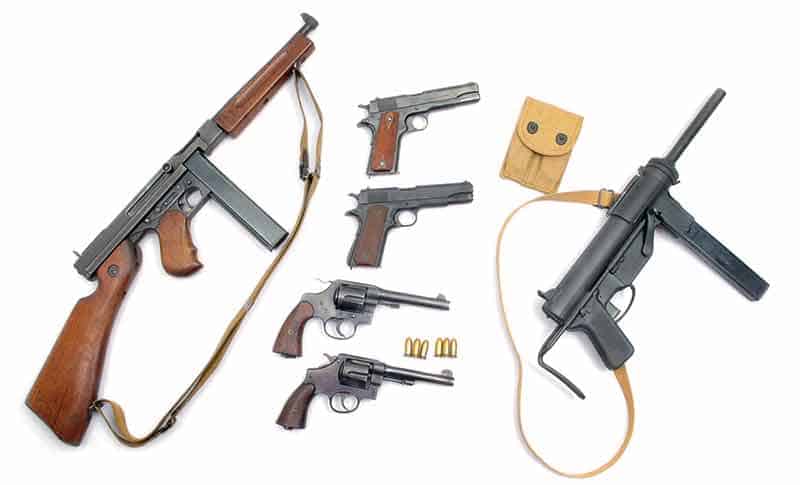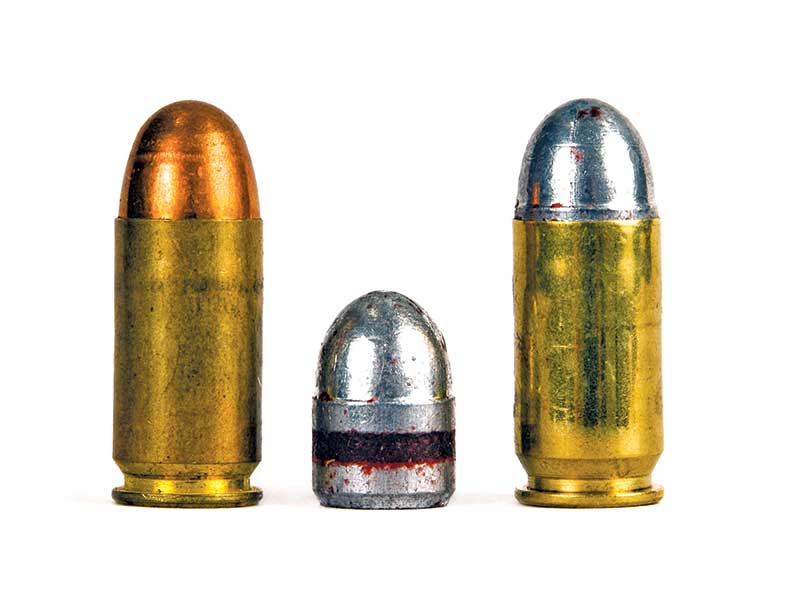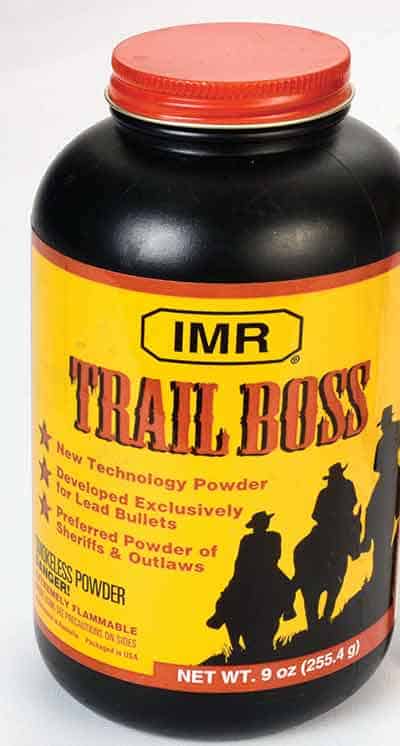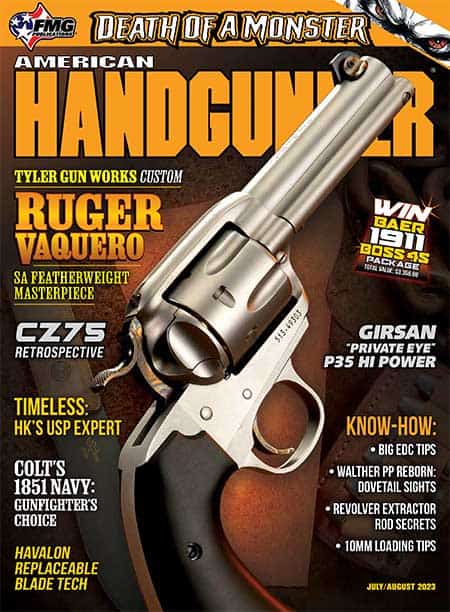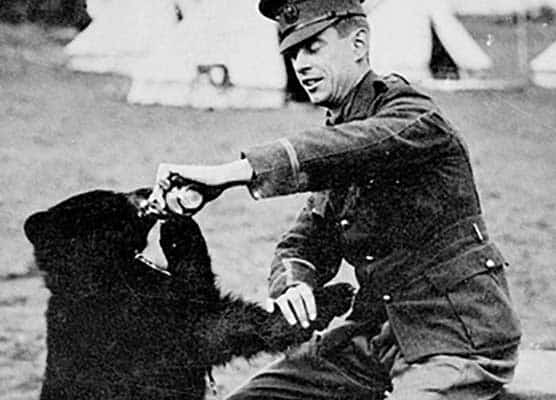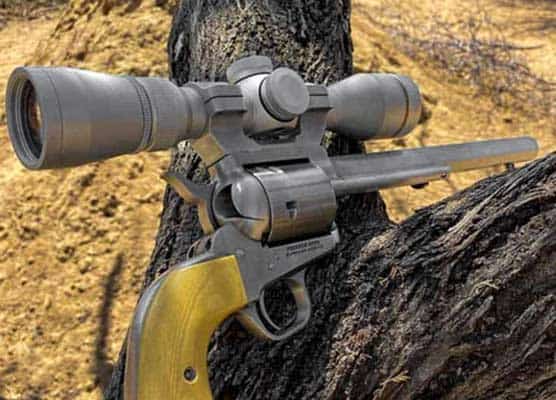Light Loads for .45 Autos
We shooters and collectors of vintage American military .45s need to pause for a moment and consider something. All military .45 Auto handguns — semi-autos and revolvers — are old and now valuable. Model 1911s are from 112 to 97 years old, and 1911A1s can be 97 to 78. Colt and S&W Model 1917 revolvers (military-marked ones) were made at least 104 years ago. My .45 Auto M1 Thompson Submachine Gun is 81 years old, and my M3 “Grease Gun” is 79. Those two are worth as much as a bucket full of the above-mentioned handguns. Furthermore, no one knows what all these .45s went through in their pasts.
Tragedy Strikes
About five years ago, I was plinking at chunks of firewood in my yard with a recently acquired Model 1911A1 made by Remington Rand. With the first round from my second magazine, a case head blew out. The checkered plastic grips shattered, stinging my hand, and my face was scored by several bits of flying brass or plastic. And I had shooting glasses on! My thought after realizing I wasn’t seriously injured was, “Oh, no! I’ve ruined this valuable piece of history.”
Luckily, I had not. The pistol required a visit to a gunsmith friend to drive that stuck case from the chamber. The barrel appeared okay, but we decided to gunny-sack it for safety’s sake. The gunsmith closely examined the rest of that 1911A1 with a magnifying glass and pronounced it safe. I searched for, bought and dropped in another World War II barrel. Then the same was done for a proper set of vintage checkered plastic grips. Some follow-up shooting revealed no problems.
Now here’s an admission of guilt. I loaded that ammo, so I was responsible. The load was 5.4 grains of W231 under 225-grain commercially cast RN bullets. Depending on the exact handgun, velocity equated to factory FMJ ballistics, which was my intention. The miscreant load came from a batch of 200 freshly assembled rounds and I pulled the bullets from the other 192 rounds and noticed no problems. I will never know what went amiss.
Time To Slow Down
On the good side, that mishap woke me up. I like shooting my military .45s. Who wouldn’t get a kick out of letting loose a burst from a Tommy Gun? Plinking at firewood chunks with the 1911s and 1917s is fun: watching the big bullets slam them about. However, I wondered, “Do I actually need to fire factory duplication handloads with either lead alloy or jacketed bullets through my vintage military .45 Autos?” The answer to that is, as long as functioning is 100% and accuracy reasonable, I do not.
My goal for a light .45 Auto hand-load was that it uses lead alloy bullets to save wear on barrels. For velocity, I shot for (literally) about 750 fps from the handguns. For the Thompson and Grease Gun, chronographing wasn’t
important to me, but functioning was. Furthermore, I didn’t want the powder charge to be a mere dollop in .45 Auto cases wherein a double charge might go unnoticed.
Here’s where I got lucky. Hodgdon’s Trail Boss powder was designed with cowboy action shooters in mind. Albeit on the fast-burning end of smokeless propellants, it’s “fluffy.” A smallish charge in grain weight still takes up plenty of case volume. Could it possibly work as a .45 Auto light powder? It certainly can. I perused Hodgdon’s own Reloading Data website and found listed Trail Boss powder with 230-grain lead roundnose bullets. The starting load was 3.5 grains with a 4.5-grain maximum. The published velocities were 658 and 761 fps, respectively.
The first loads using Trail Boss in my .45 Auto handloads carried 4.0 grains under 225-grain lead RN bullets. Velocity was about 730 fps. I upped the charge to 4.2 grains, and the velocity was right at 750 fps. Handloads were assembled normally and given a taper crimp. I chronographed those loads from the Remington Rand Model 1911A1 and they felt “soft.” Perfect! Functioning from both submachine guns was 100%. Their RPM (rounds per minute) was down a bit to about 400 RPM for the Grease Gun and 700 RPM from the Thompson. I’d found my light .45 Auto load.
Now here’s a final note. Recently I acquired a 3rd Generation Colt SAA from Colt’s Custom Shop. It is actually caliber stamped “.45 ACP” and the first such I’d ever seen. From its 4¾” barrel, it chronographed 764 fps with the light .45 Auto handload.

